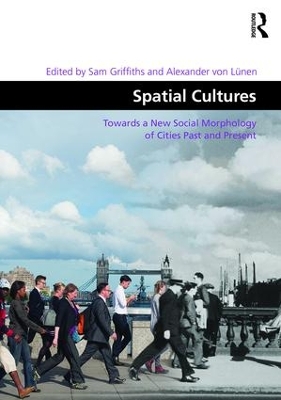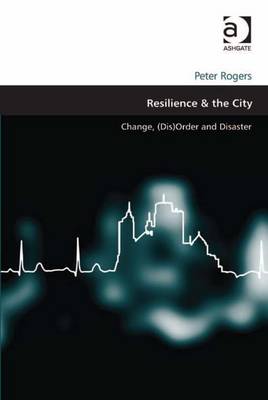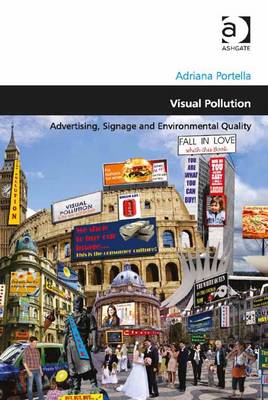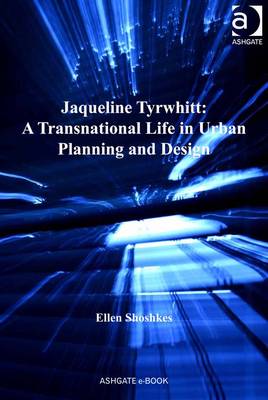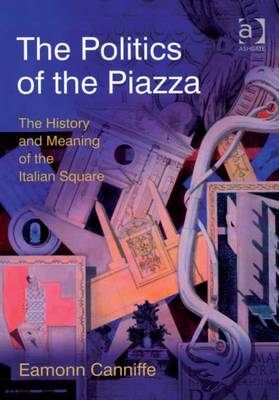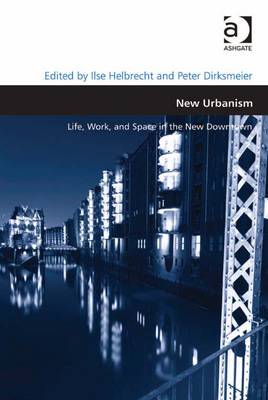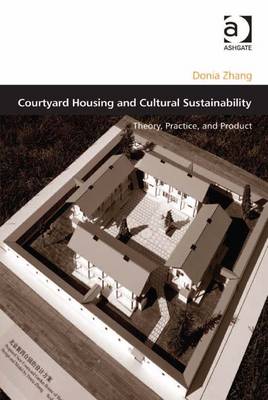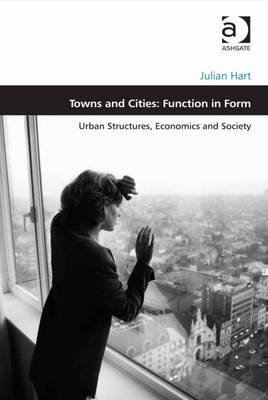Design and the Built Environment
10 total works
Spatial Cultures
What is the relationship between how cities work and what cities mean? Spatial Cultures: Towards a New Social Morphology of Cities Past and Present announces an innovative research agenda for urban studies in which themes and methods from urban history, social theory and built environment research are brought into dialogue across disciplinary and chronological boundaries. The collection confronts the recurrent epistemological impasse that arises between research focussing on the description of material built environments and that which is concerned primarily with the people who inhabit, govern and write about cities past and present. A reluctance to engage substantively with this issue has been detrimental to scholarly efforts to understand the urban built environment as a meaningful agent of human social experience. Drawing on a wide range of historical and contemporary urban case studies, as well as a selection of theoretical and methodological reflections, the contributions to this volume seek to historically, geographically and architecturally contextualize diverse spatial practices including movement, encounter, play, procession and neighbourhood. The aim is to challenge their tacit treatment as universal categories in much writing on cities and to propose alternative research possibilities with implications as much for urban design thinking as for history and the social sciences.
Following the turbulent events of the first few years of the 21st century, the growth of new security and disaster measures have led to significant changes to urban design and the management of urban space. This book blends the genealogical method of Foucault with the theory of rhythms by Lefebvre to examine these changes. The spatial history of urban disaster is linked to the rhythms of everyday urban experience to offer a revised understanding of the regulation of order and disorder in the city.
In doing so, the book highlights issues of `hardening' space, the drift from civil defence to civil protection to civil contingencies and resilience; this assessment realigns the potential impact of tightening security practices and resilient ways of thinking, doing and acting on societal security. This also links to growing concerns about quality of life over the use and potential abuse of security and disaster legislation for managing social unrest. Examples studied include the increased exclusion of minorities (such as young people) from democracy and public life; security oriented interventions in the ethnic minority communities, the use of automated technologies in policing civil and minor offences (e.g. digital plate recognition and speeding) and the interplay of diverse social groups in more commercially aligned and increasingly `securitised' public spaces of the `entrepreneurial' city.
This book highlights many significant problems with the direction of British democracy and suggests there may be both positive and negative results from becoming more resilient. While providing a critical appraisal of the realignment of neoliberal democracy at large, it also links discussion on `gentrification', `revanchism' and `urban security' to a forward looking agenda for further research.
In recent years, there has been considerable interest in the problems that public spaces face because of the design of commercial signs. The negative consequences that commercial signs can have on the visual quality of urban areas and further more, on people's quality of life, has been studied from both architectural, planning and psychological perspectives.
While the issue of visual pollution, as this phenomenon is commonly described, has been widely debated, there is as yet no clear conclusion as to how best to control commercial signage and whether different urban contexts and people from different backgrounds and cultures have universal or distinct preferences. Several different commenrcial signage approaches are currently applied to different historic cities, but these initiatives are not based on principles derived from the perception and evaluation of users.
Drawing on a range of comparative and contrasting empirical studies of historic city centres in the UK and Brazil, this book examines questions of commercial signage control management, the preservation of historic heritage and user preference and satisfaction. The author takes an environment behaviour approach to this research, involving theories, concepts and methodologies related to environmental psychology, architecture, planning and urban design.
In doing so, it argues that there are in fact visual preferences common to the majority of people, independent of their urban context and that these common views can be useful to the development of a general theory of how to control commercial signage. In conclusion, the book suggests that the best way of controlling signage is not only to recommend general guidelines related to the operation of commercial signage, but also to recommend design principles that can create commercial streetscapes evaluated positively by different users.
Following the British withdrawal in 1971, the Gulf Region entered a heady period of political restructuring, awash with oil money that helped fund national aspirations. Infrastructure investment became a central part of the region's nation-building initiatives and fueled strong competition.
Without its neighbours' oil fields, infrastructure and territorial development became particularly vital to Dubai. This book provides a unique and detailed understanding of Dubai urbanism by demonstrating that cumulative programmatic intensification and scalar amplification of its large-scale infrastructural components guided its metropolitan growth and generated a territorial organization logic that outstripped the predictive capacity of traditional Western master planning.
Dubai's rapid series of infrastructural projects culminated in the Jebel Ali Port, Industrial Area, and Free Zone, which marked a definitive "before and after" point. The book shows how Jebel Ali also became the template for subsequent developments, Dubai World Holdings Company's international aspirations, and the agencies that manage and regulate Dubai's large-scale infrastructural projects today.
Dubai Amplified highlights the cycle of typological borrowing, prototypical replication, and scalar amplification, specifically in Dubai's infrastructure projects, to best describe its general territorial development. While infrastructure is traditionally understood as the elemental "hardware" that undergirds urban development, the book concludes by arguing that the definition should be expanded in this case as more of a set of objects, networks, and services that cities can selectively borrow, replicate, and amplify.
Jaqueline Tyrwhitt: A Transnational Life in Urban Planning and Design
by Ellen Shoshkes
Jaqueline Tyrwhitt's life story is truly a gap in the planning and urban design literature: while largely unacknowledged, she played a central role in twentieth-century design history. Here, Ellen Shoshkes provides a full and insightful appraisal of the British town planner, editor, and educator who was at the center of the group of people who shaped the post-war Modern Movement.
Beginning with an examination of her early work planning for the physical reconstruction of post-war Britain, Shoshkes argues that Tyrwhitt forged a highly influential synthesis of the bioregionalism of the pioneering Scottish planner Patrick Geddes and the tenets of European modernism, as adapted by the Mars group, the British chapter of CIAM.
The book traces Tyrwhitt's subsequent contribution to the development of this set of ideas in diverse geographical, cultural and institutional settings and through personal relationships. In doing so, the book also sheds light on Tyrwhitt's role in the revival of transnational networks of scholars and practitioners concerned with a humanistic, ecological approach to urban and regional planning and design following World War Two, notably those connecting East and West.
The book details Tyrwhitt's role in creating new programs for planning education in
England, North America and Asia; pioneering methods for registered, overlay mapping (a forerunner of GIS), shaping post-war CIAM discourse on humanistic urbanism and assisting CIAM president Jose Luis Sert establish a new professional field of urban design based on this discourse at Harvard University (1956-69); consulting to the United Nations; collaborating with Sigfried Giedion on all of his major publications in English from 1947 on; and helping Constantinos Doxiadis promote a holistic approach to the study of human settlements, which he termed Ekistics, as a founding editor of the journal Ekistics and in the ten Delos Symposia Doxiadis hosted (1963-1972).
The book concludes with an assessment of Tyrwhitt's contributions to the history of planning and urban design education and practice and their relevance for contemporary scholars and practitioners, particularly those concerned with 'healthy' community design and sustainability.
Through a detailed study of the principal spaces of Italian cities, this book explores the relationship between political systems and their methods of representation in architecture. Illustrated by contemporary photographs and analytical drawings, it examines significant piazzas and situates these examples in their social and political contexts, highlighting the urban evidence of shifts between autocratic and democratic forms of government through history.
The ideological role of political architecture is analyzed through the work of various theorists including ancient sources, Renaissance thinkers and modern critics. The complex evolution of individual spaces over time is represented by their physical layering from ancient times to the present day. Other examples connect the development of different characteristic types of Italian urban form in chronological sequence, categorized by art historical and political periods.
New Urbanism
The advent of the 21st century marks the unfolding of a new urbanism, of a new urban fabric in the making. Bringing together a range of leading scholars from a wide range of disciplines, this edited collection examines innovative urban redevelopment projects around Europe and North America which are at the forefront of this new urbanism and which are here termed 'New Downtowns'. It introduces this term and concept and addresses major questions such as: What does a sustained urbanity for the 21st century look like? Which strategies do politicians and planners deploy to create new synergies between planning for the public good and private interest? Can market forces be co-opted for collective interests? Does the imagination of a European city continue to inspire new urbanism within and beyond Europe? And can a future urbanity for the 21st century be planned at all?
In particular, it focuses on Hamburg's HafenCity", which, at around 155 hectares, is one of the most prominent city centre development projects in Europe and will increase the size of Hamburg's city centre by 40 percent. The project HafenCity serves as a starting point for a conceptually wide ranging debate on the character, shape, function and meaning of New Downtowns.
Cultural sustainability is a very important aspect of the overall sustainability framework and is regarded as the `fourth pillar' alongside the other three: environmental, economic, and social sustainability. However, the concept is neither fully explored, nor widely accepted or recognized. This book elicits the interplay of `nature-culture-architecture' and theorizes the concept of `cultural sustainability' and `culturally sustainable architecture.' It identifies four key themes in Chinese philosophy: Harmony with Heaven, Harmony with Earth, Harmony with Humans, and Harmony with Self, along with Greek philosopher Aristotle's physics: form, space, matter, and time, it sets them as criteria to evaluate the renewed and new courtyard housing projects constructed in China since the 1990s.
Using an innovative architectural and social science approach, this book examines the political, economic, social, and spatial factors that affect cultural sustainability. Supported by a multiplicity of data including: field surveys, interviews with residents, architects, and planners, time diaries, drawings, photos, planning documents, observation notes, and real estate brochures, the book proposes new courtyard garden house design strategies that promote healthy communities and human care for one another, a concept that is universally applicable. The volume is a first opportunity to take a holistic view, to encompass eastern and western, tangible and intangible, cultures in the theorization of `cultural sustainability' and `culturally sustainable architecture.' It is a comprehensive contribution to architectural theory.
Challenging existing assumptions about how our towns and cities are structured and formed, Julian Hart provides an engaging and thought-provoking alternative theory of urban design. This is not urban design in the sense of the practice of design; rather it is a theory of the form of the town at all scales - why towns and cities happen to be structured the way they are as a result of the social, political, legal and (especially) economic forces that create them.
The shape of the city at every scale, from the internal configuration of dwellings all the way up to the superstructure of the whole city, can be seen to arise from the interplay between three antagonistic socio-economic tensions. In going about our daily business and in championing particular political objectives, we collectively fashion our cities in terms of their structure and form. This leads to various new ways of understanding how and why our cities so happen to be configured the way they are.
The book makes a step change from any other comparable studies by understanding our towns and cities in terms of function in form. This helps us to appreciate why every town is a recognisable town, wherever it is. Different urban environments in different parts of the world, past and present, can come to be seen according to their similarities instead of their differences. Furthermore, by appreciating how the economic influences of everyday life structure our towns and cities, we can in turn begin to understand better how the shape of towns and cities affects the quality of life of inhabitants and the cohesiveness of communities. In covering all scales from inside the home to macrostructure of the city, the book encapsulates urban design through to town planning and does not seek to distinguish between the various design disciplines.
Urban Design in the Arab World
The Arab World is perceived to be a region rampant with constructed and ambiguous national identities, overwhelming wealth and poverty, religious diversity, and recently the Arab uprisings, a bottom-up revolution shaking the foundations of pre-established, long-standing hierarchies. It is also a region that has witnessed a remarkable level of transformation and development due to the accelerated pace imposed by post-war reconstruction, environmental degradation, and the competition among cities for world visibility and tourism.
Accordingly, the Arab World is a prime territory for questioning urban design, inviting as it does a multiplicity of opportunities for shaping, upgrading, and rebuilding urban form and civic space while subjecting global paradigms to regional and local realities.
Providing a critical overview of the state of contemporary urban design in the Arab World, this book conceptualizes the field under four major perspectives: urban design as discourse, as discipline, as research, and as practice. It poses two questions. How can such a diversity of practice be positioned with regard to current international trends in urban design? Also, what constitutes the specificity of the Middle Eastern experience in light of the regional political and cultural settings?
This book is about urban designers `on the margins': how they narrate their cities, how they engage with their discipline, and how they negotiate their distance from, and with respect to global disciplinary trends. As such, the term margins implies three complementary connotations: on the global level, it invites speculation on the way contemporary urban design is being impacted by the new conceptualizations of center-periphery originating from the post-colonial discourse; on the regional level, it is a speculation on the specificity of urban design thinking and practice within a particular geographical and cultural context (here, the Arab World); and finally, on the local level, it is an attestation to a major shift in urban design focus from city centers to their margins with unchecked suburban growth, informal development, and disregard for leftover spaces.
